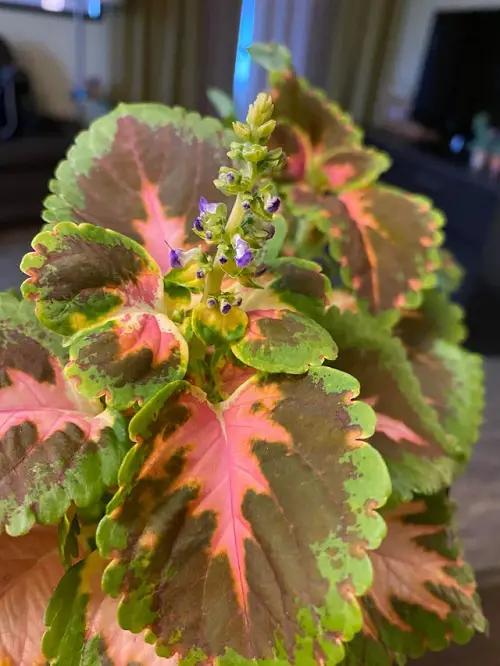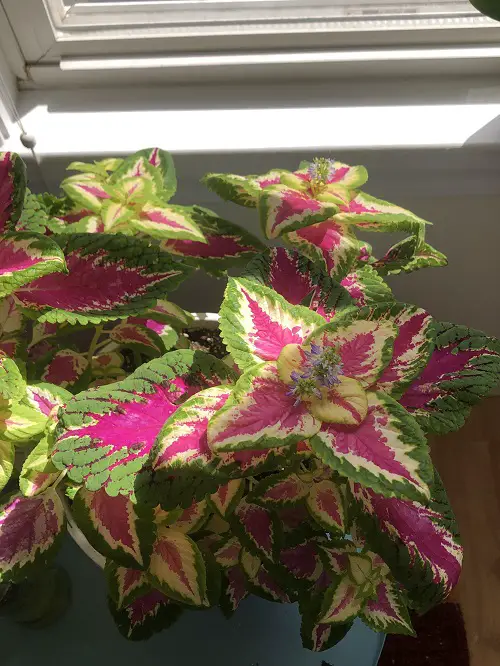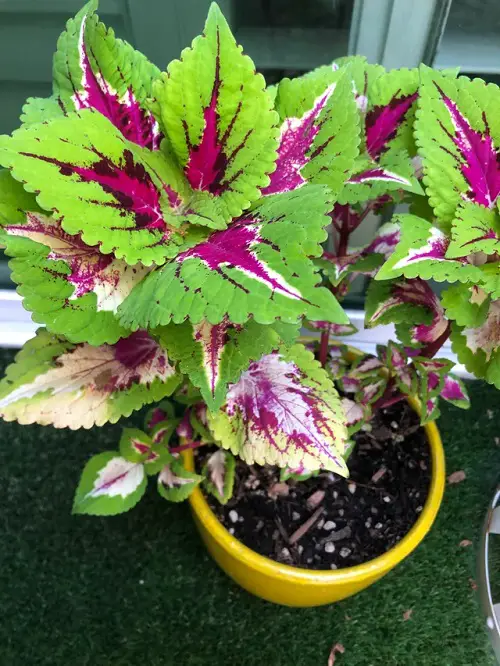What’s the best way to get this popular houseplant full and bushy? Cut Your Coleus! Here are 5 Reasons Why You Should Do This!
Has your vibrant coleus turned dull, sparse, and leggy? Don’t worry–it’s not time to toss it out yet! It just needs a little trim. Pruning coleus is an easy and effective way to get it to grow quicker and better. We show you all the reasons why and how to cut your coleus.
Reasons to Cut Back Coleus
1. To Prevent Bolting

Coleus is a flowering plant, but it’s coveted chiefly for its colorful, variegated foliage. When this plant detects long days and hot weather, its primal instinct kicks in, leading it to bolt (set seeds). Flower spikes emerge at the top, stealing the plant’s energy and deterring it from producing new leaves.
You can cut your coleus to redirect its vitality into bushier growth and prettier leaves. Gently pinch off the growing tips, and the sneaky flower buds, and your beloved mint cousin will be back with a bounce!
2. Do it for Bushier Growth
Coleus plants naturally grow taller first, focusing all energy on reaching sunlight. After they mature, they start filling out sideways. But we don’t want to wait that long, do we?
Just pinch the topmost part of the stem with fresh leaves–its terminal bud–to signal the plant to redirect its energy to the lateral buds along the stem. Pruning this growing tip will help develop side shoots, leading to a bouncy and fuller-looking coleus.
3. When it’s Lanky

If your coleus isn’t getting proper sunlight and care, it will grow lanky. The best time to tackle these awkward leggy issues is during its active growing season, typically between spring and summer.
Just pick out the long, leggy stems, grab your shears, and cut them off. Don’t hesitate to cut back by up to one-third of the plant’s height. And remember, the magic happens at the nodes, the point where new leaves sprout. Make the cuts just above healthy nodes, angled slightly downwards. It’ll encourage water to roll off the cut and prevent rot.
As a rule, prune during the growing season to manage its size and lankiness. And prune during spring to ensure bushier growth.
4. For Air Circulation

Mostly in indoor situations, your coleus can become a breeding ground for fungal diseases without good ventilation. Pruning, again during the active growing season, helps prevent this.
Just free up the plant’s main stem by trimming away leggy, tangled growth on either side and top its uppermost leaves as well. This ensures your coleus can grow freely.
5. To Overwinter Coleus Plants
Coleus plants are great for splashes of color in the summer, but come fall, frost threatens them. Here’s where overwintering helps, as this tender perennial cannot survive frost. You either bring it indoors and try to grow a big coleus tree or save cuttings to propagate new plants to ensure they survive the cold.
Before the frost hits, grab your shears and collect healthy stems. Get 3 to 4 inches sections with a few leaves at the top and plant these stems in a potting tray with moist soil.
These cuttings root easily, and with bright, indirect light, misting, and patience, you’ll have a new coleus plant to nurture indoors! You can even root and grow them in water.


